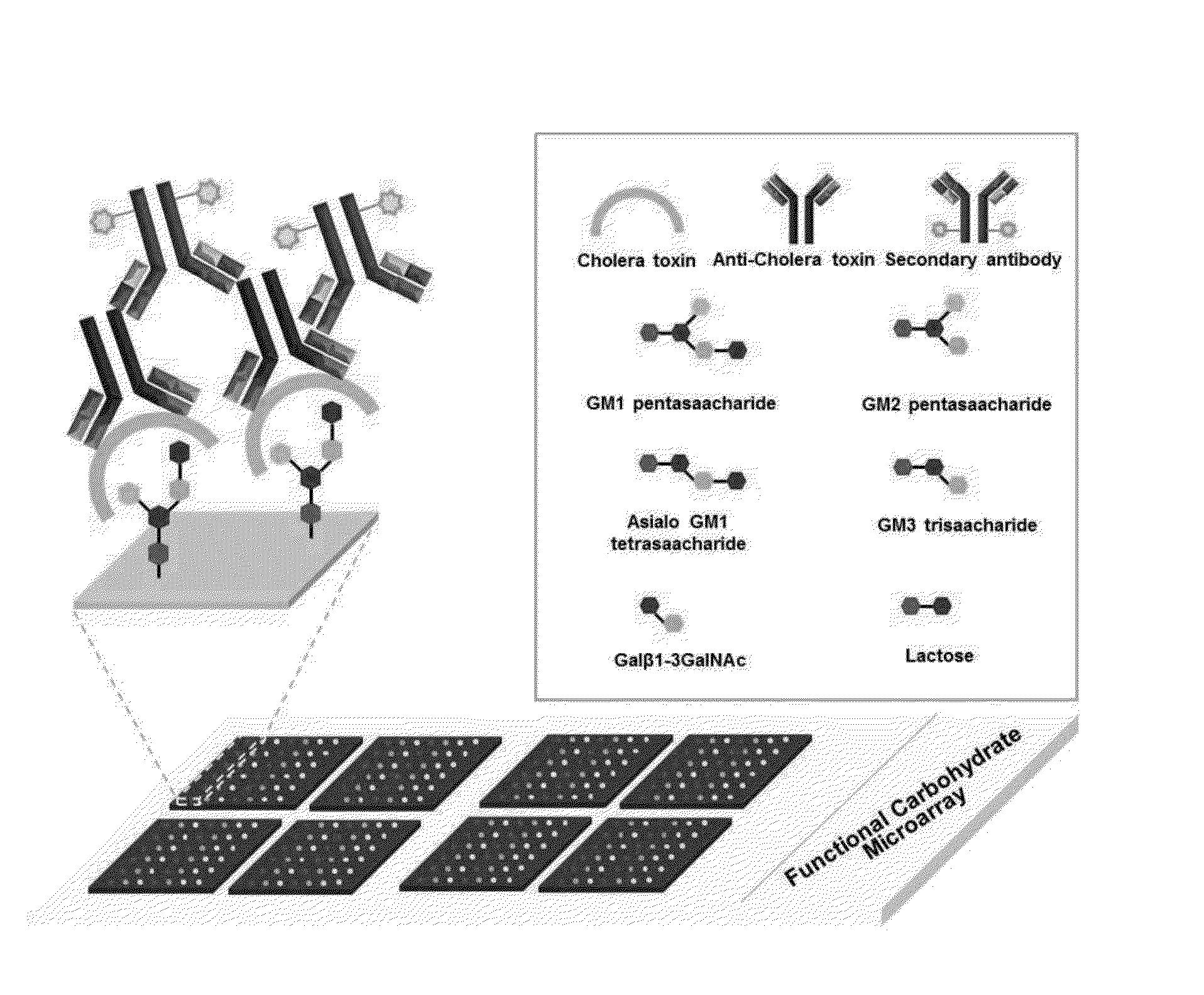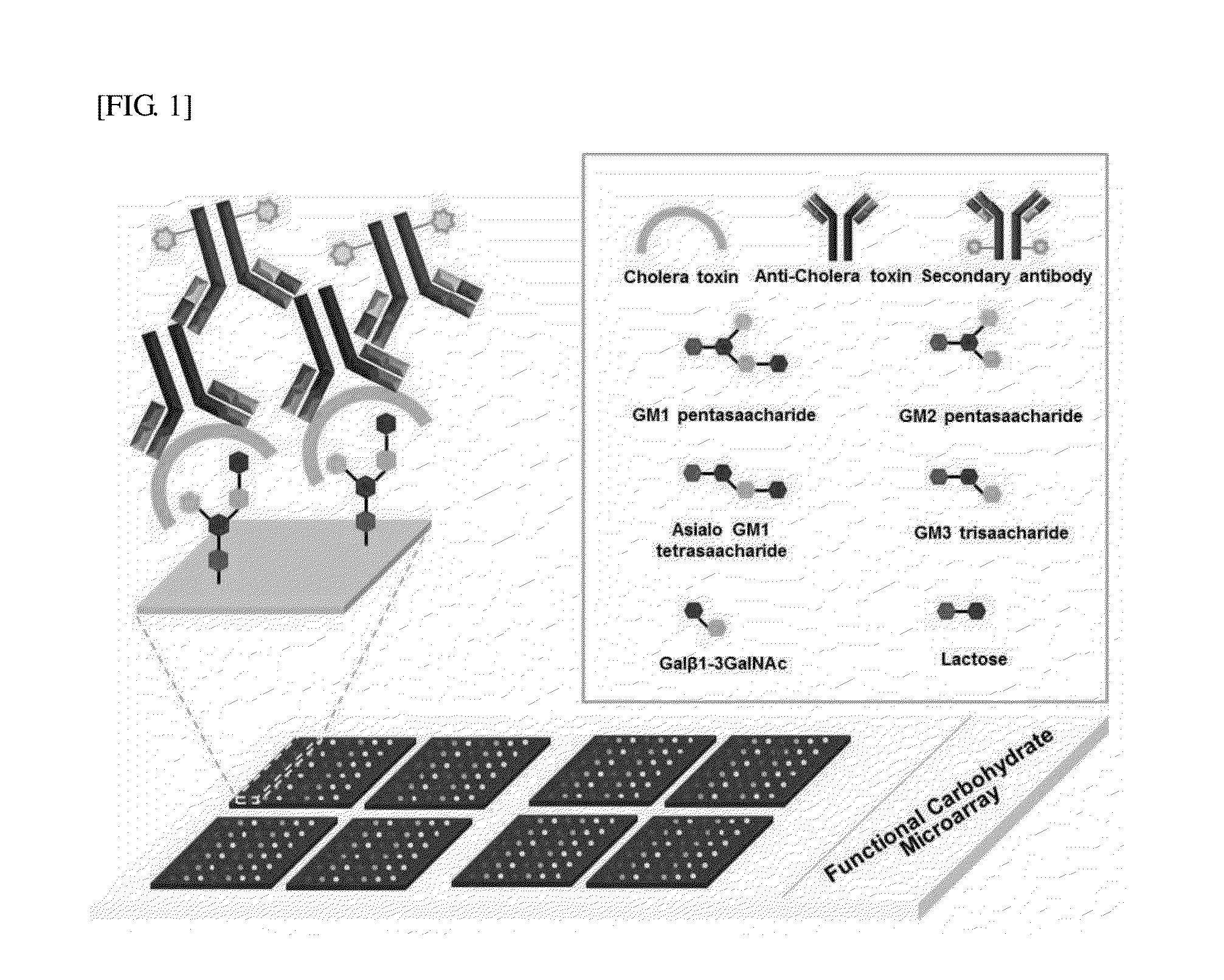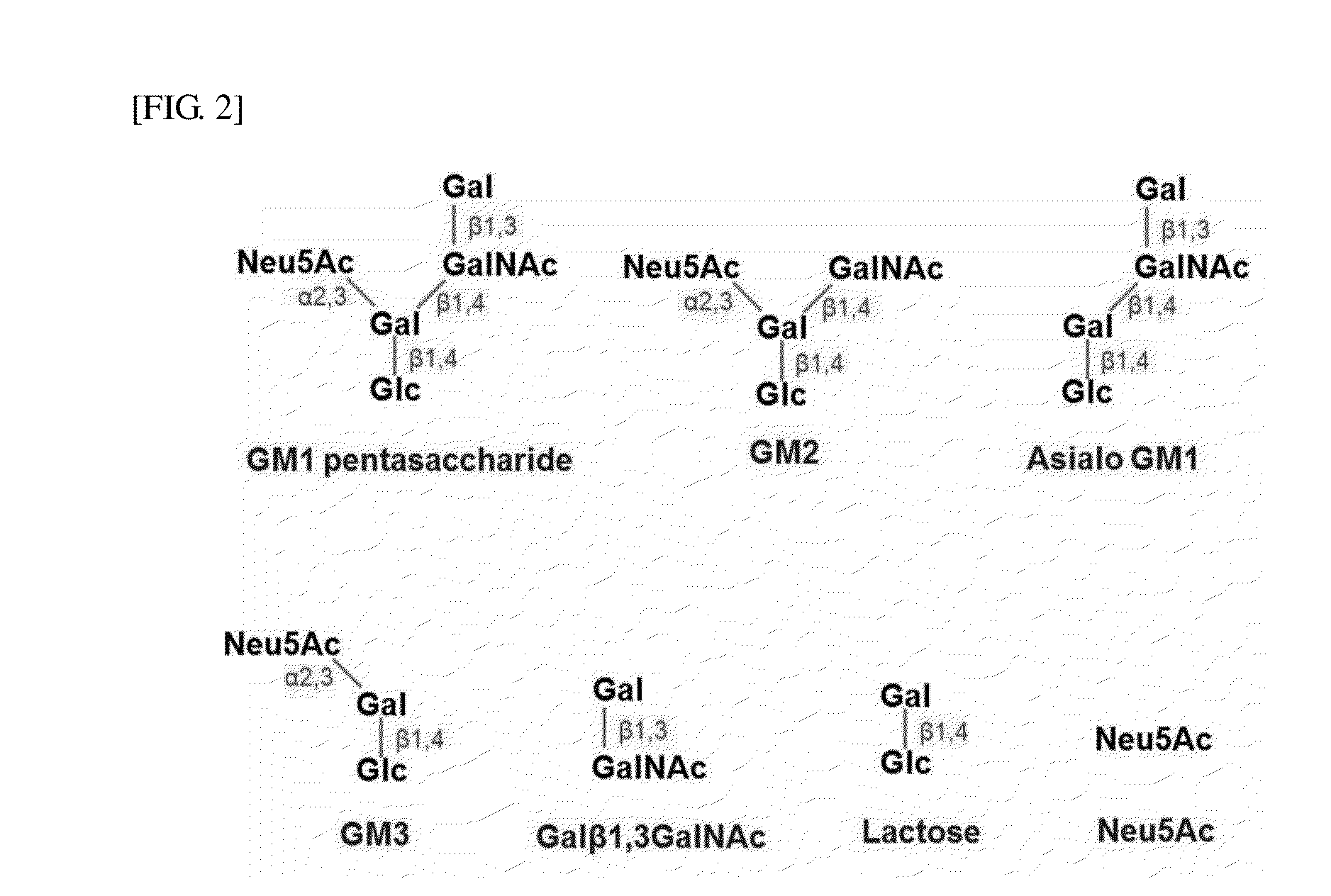Carbohydrate Chip for Detection of Pathogen Vibrio Cholerae and Method of Preparing the Same
a vibrio cholerae and carbohydrate chip technology, applied in the field of carbohydrate chip for detection of vibrio cholerae and the same, can solve the problems of high death rate, cholera can be fatal, and the stability of the sensor for detecting vibrio cholerae is problemati
- Summary
- Abstract
- Description
- Claims
- Application Information
AI Technical Summary
Benefits of technology
Problems solved by technology
Method used
Image
Examples
example 1
Fabrication of Carbohydrate Chip
[0073]100 mM of saccharides (i.e., GM1 pentasaccharide, GM2 tetrasaccharide, asialo GM1 tetrasaccharide, GM3 trisaccharide, galactose-β 1,3-N-acetylgalactosamine, lactose, and sialic acid) dissolved in water and 100 mM of aminoethyl aniline dissolved in 100% acetic acid were mixed at a volume ratio of 1:1, and the aldehyde group of the saccharides was reacted with the amine group of the aniline at 40° C. for one hour to introduce an amine group into the saccharides through the schiff base reaction. After completion of the reaction, 100 mM of dimethylamine borane was added to cause a reduction reaction for about one hour.
[0074]The amine-introduced saccharides were dissolved in a print buffer (at pH 8.5) consisting of 150 mM of phosphate, 0.04% Tween-20, 5% glycerol, and 0.1 mg / ml of bovine serum albumin (BSA) and then spotted on a glass slide (Schott Nexterion, Germany) treated with N-hydroxysuccinimide at humidity of 75% using a pin (Chip Maker 2) and...
example 3
Detection of Cholera Toxin Secreted from Vibrio Cholerae Culture Using Carbohydrate Chip
[0084]There has been a demand for fast and high-sensitivity analyses for Vibrio cholerae, since many people suffer from water or foods contaminated with Vibrio cholerae. For that reason, an experiment was carried out to determine whether the carbohydrate chip of the present invention was capable of detecting cholera toxin from the actual Vibrio cholerae culture. The experiment used the carbohydrate chip consisting of seven carbohydrates (i.e., GM1 pentasaccharide, GM2 tetrasaccharide, asialo GM1 tetrasaccharide, GM3 trisaccharide, galactose-β 1,3-N-acetylgalactosamine, lactose, and sialic acid) as prepared in Example 1. The conditions of the experiment were the same as defined in the quantitative analysis using the whole cholera toxin. To determine whether the carbohydrate chip was enabled to overcome the long culture time required in detecting dangerous microorganism Vibrio cholerae, the experim...
PUM
 Login to View More
Login to View More Abstract
Description
Claims
Application Information
 Login to View More
Login to View More - R&D
- Intellectual Property
- Life Sciences
- Materials
- Tech Scout
- Unparalleled Data Quality
- Higher Quality Content
- 60% Fewer Hallucinations
Browse by: Latest US Patents, China's latest patents, Technical Efficacy Thesaurus, Application Domain, Technology Topic, Popular Technical Reports.
© 2025 PatSnap. All rights reserved.Legal|Privacy policy|Modern Slavery Act Transparency Statement|Sitemap|About US| Contact US: help@patsnap.com



